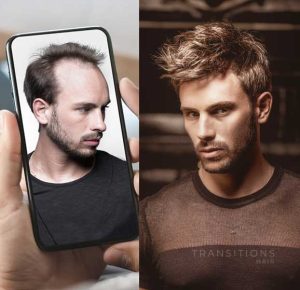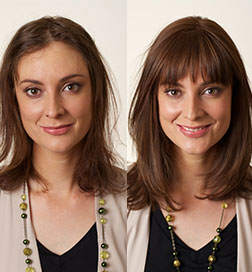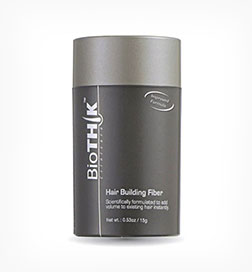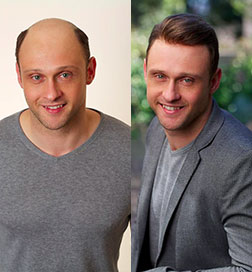A Guide to Hair Transplants
They say hair is a person’s crowning glory, but what happens when that crown starts to fade? Fortunately, losing hair doesn’t have to mean losing hope. With a hair transplant, you can reclaim your luscious locks as well as your confidence. In this guide, we’ll discover the cutting-edge techniques available to those suffering from hair thinning and baldness. We’ll delve into every aspect of the transplant process, from pre-operative preparation to recovery, empowering you to make an informed decision on your path to a fuller head of hair. Let’s dive in.
What is a Hair Transplant?
A hair transplant is a surgical procedure that involves the transplantation of hair follicles from a donor site to areas experiencing hair loss. The transplanted follicles take root in the recipient areas, restoring natural hair growth. This procedure offers a permanent solution for individuals with pattern baldness, receding hairlines, or thinning hair due to genetics, trauma, or medical conditions such as alopecia.

What is the best age to get a hair transplant?
The best age to get a hair transplant is in the late 20s to early 40s, when the pattern of hair loss stabilises. However, it’s advised to consult with a qualified hair transplant specialist to determine the most suitable timing based on individual factors and needs.
Do hair transplants look natural?
When performed with skill and precision, hair transplants can achieve highly natural-looking results that seamlessly blend with the patient’s original hair. Modern hair grafting techniques allow for the precise placement of individual hair follicles, mimicking the natural hair growth pattern. Choosing a skilled surgeon and following post-operative care instructions are crucial for achieving the best possible results.

Types of Hair Transplants
Follicular Unit Transplantation (FUT) and Follicular Unit Extraction (FUE) are two common techniques for hair transplants. Let’s take a closer look at each.
Follicular Unit Transplantation (FUT)
FUT involves removing a strip of scalp from the back or side of the head, which is dissected into individual follicular units consisting of one to four hairs. These units are then transplanted into the area experiencing hair loss.
An FUT hair transplant allows for the transplantation of a significant number of hair grafts in a single session, making it suitable for patients requiring extensive coverage. The donor site is closed with sutures, leaving a linear scar that can be concealed by surrounding hair. As the transplanted hair follicles are from the patient’s own scalp, they are genetically resistant to hair loss and continue to grow naturally.
Follicular Unit Extraction (FUE)
Unlike FUT, a FUE hair transplant is minimally invasive. It involves the extraction of individual hair follicles from the back or sides of the scalp using a specialised micro-punch tool. The recipient area is prepared using small incisions, and the extracted follicular units are then strategically implanted into the incisions to create a natural-looking hairline. The transplanted hair grows naturally, and the scars left by FUE are almost indiscernible. This technique is suitable for both small and large hair transplant sessions, offering versatility in addressing varying degrees of hair loss.
Transplant Cost
Hair transplant cost can vary significantly due to the extent of hair loss, the desired level of coverage, the chosen technique, and the experience of the surgeon. To receive a personalised price estimate for your specific needs, book a free consultation with Transitions Hair.
Does Medicare cover hair transplants?
Elective cosmetic procedures are not covered by Medicare, and as such, most hair transplants do not qualify for rebates. However, in circumstances where patients have suffered hair loss as a result of congenital disease or trauma, the procedure is considered a reconstructive treatment and may be eligible for coverage.

Choosing a Surgeon
Choosing a qualified and skilled surgeon is crucial for a successful hair transplant. At Transitions Hair, we work with award-winning surgeons who have garnered global recognition for their contributions to the industry. Their expertise ensures precise graft placement, natural-looking results, and the highest level of care.
Preoperative Preparation
In preparation for a hair transplant, patients will receive personalised instructions from their surgeon based on the extent and cause of their hair loss, and the type of transplant they will be undergoing. In some cases, a complete shave of the donor and recipient areas is needed to facilitate the procedure; in other cases, a trim is sufficient. Patients may also be advised to abstain from smoking and alcohol in preparation for the procedure, and to avoid blood thinners and non-steroidal anti-inflammatory drugs (NSAIDs) that can increase the risk of bleeding.
Patients should also be aware of the effects of anesthesia. Drowsiness is common after the procedure, and it’s thus advisable to arrange for transportation to and from the clinic.
Recovery
After a hair transplant, patients will receive post-operative care instructions, which typically include gentle washing techniques. It’s also recommended to protect the scalp from unnecessary friction, pressure, or abrasion during the healing period. Patients should avoid touching or scratching the treated area, exposure to direct sunlight, strenuous activities, wearing hats or helmets, and using hair styling products or hair dye for at least two weeks following the transplant.


How Successful is a Hair Transplant?
Hair transplants have a high success rate, with most patients experiencing permanent results. The transplanted hair follicles are genetically resistant to further hair loss, though thinning and baldness may occur in untreated areas of the scalp. Following post-operative care instructions and maintaining a hair care regimen can enhance the long-term results of a hair transplant.
When does the hair start to grow?
Initially, transplanted hair follicles enter a resting phase where there is minimal growth. In 3-4 months, the follicles transition into an active growth phase, where new hair begins to emerge. The hair will continue to grow and mature, and can take up to 12-18 months to achieve full growth and thickness.
Does hair grow back in the donor area?
The scalp and hair follicles in the donor area are not permanently damaged during the extraction process, and hair in this area will continue to grow after the transplant. Over time, hair growth in the donor area will cover the small scars left from the procedure.
Risks and Complications
While hair transplants are generally safe, there are potential risks and complications to be aware of. These include infection, bleeding, scarring, swelling, itching, and numbness. In some cases, the transplanted hair follicles may not survive or grow as expected, and there is a minor risk of shock loss, where existing hair may temporarily shed. Choosing a skilled surgeon, and following aftercare instructions can help to mitigate these risks and increase the chance of a successful outcome.
Alternative Treatments
While hair transplants offer the benefit of permanent, natural-looking results, there are several non-invasive, affordable alternatives worth considering. Laser therapy stimulates hair growth by encouraging blood circulation to the scalp, while hair systems (aka toupees)can provide seamless coverage.
At Transitions Hair, we offer a range of hair loss solutions that can restore your confidence and help you achieve a fuller head of hair. Contact us today to arrange a free consultation and explore the possibilities.





